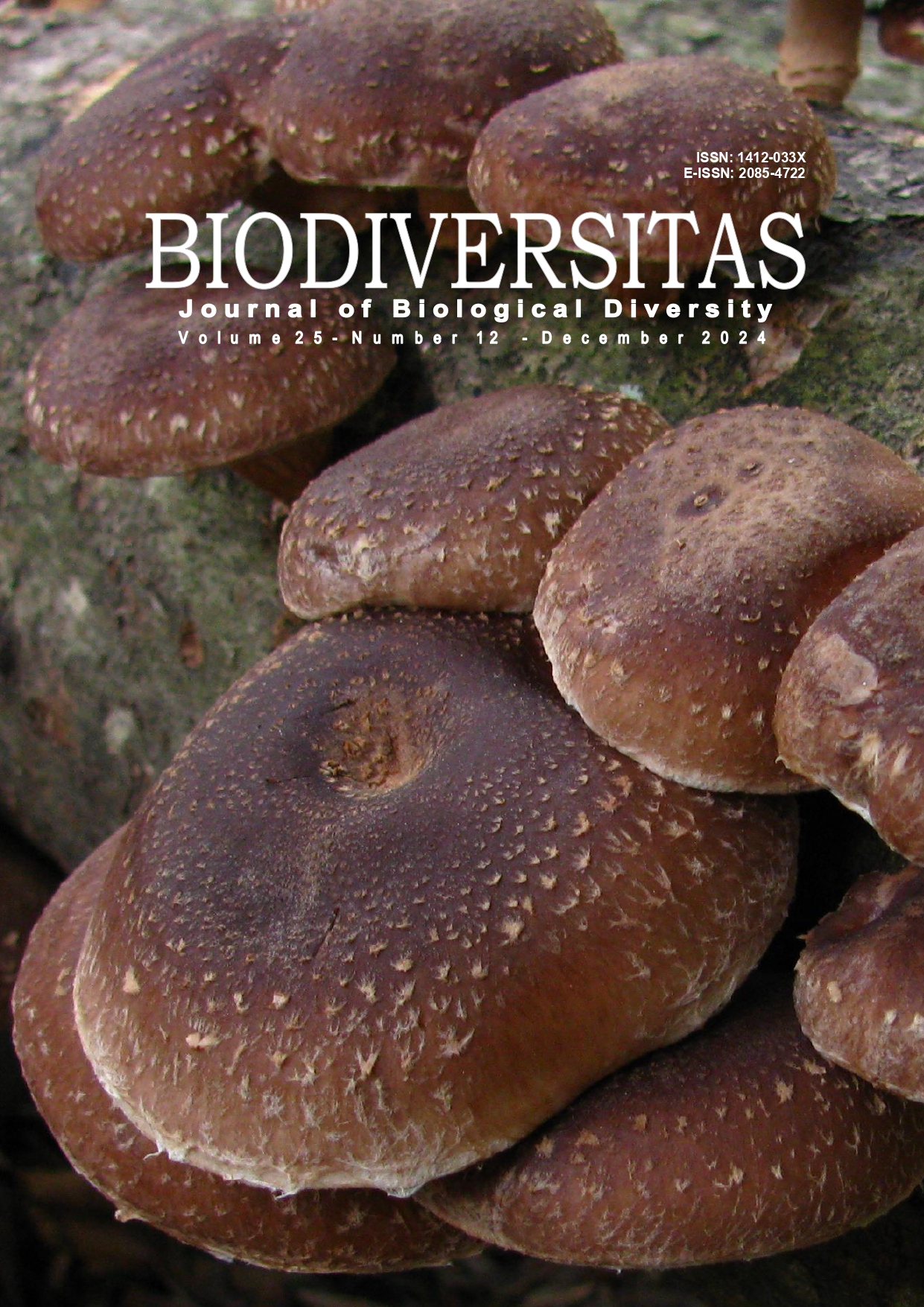DNA barcoding of intertidal barnacles as potential bioindicators of microplastic pollution in Seribu Islands and Jakarta Bay, Indonesia
##plugins.themes.bootstrap3.article.main##
Abstract
Abstract. Raufanda MS, Prabowo RE, Nuryanto A. 2024. DNA barcoding of intertidal barnacles as potential bioindicators of microplastic pollution in Seribu Islands and Jakarta Bay, Indonesia. Biodiversitas 25: 4664-4676. Barnacles, with their sessile nature and filter-feeding behavior, hold significant potential as bioindicators of microplastic pollution. Due to the diverse morphotypes across barnacle species, DNA barcoding is a reliable technique for accurate taxonomic identification. This research aimed to determine intertidal barnacle species and identify potential bioindicators of microplastic pollution in Seribu Islands and Jakarta Bay, Indonesia. Barnacle samples were collected from seven locations using purposive sampling. Microplastic characteristics were analyzed visually and polymer-type testing was performed using Attenuated Total Reflectance-Fourier Transform Infrared Spectroscopy (ATR-FTIR). Data was analyzed using Pearson correlation and bioconcentration factors to determine potential microplastic bioindicator species based on three criteria. The significance level was set at p<0.05 and all statistical analyses were performed using SPSS. Four species of intertidal barnacles were identified in Seribu Islands and Jakarta Bay, namely Amphibalanus amphitrite, Striatobalanus amaryllis, Amphibalanus zhujiangensis, and Newmanella radiata. DNA barcoding was used to determine the first three species, while morphological analysis identified the fourth species. The microplastic particle count varied among the species, with A. amphitrite showing the highest concentration at 42-53 particles/g. Due to its clear taxonomy, ease of surveying, and wide distribution, A. amphitrite has strong potential as a bioindicator of microplastic pollution, as it can accumulate more than other species.
##plugins.themes.bootstrap3.article.details##
Most read articles by the same author(s)
- DIAN BHAGAWATI, AGUS NURYANTO, ELLY TUTY WINARNI, ANASTASIA ENDANG PULUNGSARI, Morphological and molecular characterization of mole crab (Genus: Emerita) in the Cilacap coastlines of Indonesia, with particular focus on genetic diversity of Emerita sp. nov. , Biodiversitas Journal of Biological Diversity: Vol. 23 No. 5 (2022)
- DIAH MUSTIKASARI, AGUS NURYANTO, SUHESTRI SURYANINGSIH, Phylogeography of Aplocheilus panchax in Indonesia, with special focus on the Bangka Island population , Biodiversitas Journal of Biological Diversity: Vol. 23 No. 4 (2022)
- SRI RIANI, ROMANUS EDY PRABOWO, AGUS NURYANTO, Molecular characteristics and taxonomic status of morphologically similar barnacles (Amphibalanus) assessed using the cytochrome c oxidase 1 gene , Biodiversitas Journal of Biological Diversity: Vol. 22 No. 3 (2021)
- AGUS NURYANTO, GINA AMALIA, DAINTY KHAIRANI, HENDRO PRAMONO, DIAN BHAGAWATI, Molecular characterization of four giant gourami strains from Java and Sumatra , Biodiversitas Journal of Biological Diversity: Vol. 19 No. 2 (2018)
- AGUS NURYANTO, DIAN BHAGAWATI, KUSBIYANTO, Evaluation of conservation and trade status of marine ornamental fish harvested from Pangandaran Coastal Waters, West Java, Indonesia , Biodiversitas Journal of Biological Diversity: Vol. 21 No. 2 (2020)
- AGUS NURYANTO, NUNUNG KOMALAWATI, SUGIHARTO, Genetic diversity assessment of Hemibagrus nemurus from rivers in Java Island, Indonesia using COI gene , Biodiversitas Journal of Biological Diversity: Vol. 20 No. 9 (2019)
- KUSBIYANTO, DIAN BHAGAWATI, AGUS NURYANTO, DNA barcoding of Crustacean larvae in the eastern areas of Segara Anakan Cilacap, Central Java Indonesia , Biodiversitas Journal of Biological Diversity: Vol. 21 No. 10 (2020)
- MOHAMMED A. MOHAMMED, AGUS NURYANTO, ENDANG SRIMURNI KUSMINTARSIH, Genetic differentiation of dengue vector Aedes aegypti in the small geographical scale of Banyumas District, Indonesia based on Cytochrome Oxidase I , Biodiversitas Journal of Biological Diversity: Vol. 22 No. 2 (2021)
- NUNING SETYANINGRUM, WINDIARIANI LESTARI, KRISMONO, AGUS NURYANTO, Exploitation of striped snakehead (Channa striata) in Sempor Reservoir, Central Java, Indonesia: A proposed conservation strategy , Biodiversitas Journal of Biological Diversity: Vol. 23 No. 7 (2022)
- NUNING SETYANINGRUM, W. LESTARI, KRISMONO, AGUS NURYANTO, Genetically continuous populations of Striped Snakehead (Channa striata) in the Cingcingguling River fragmented by Sempor Reservoir, Central Java, Indonesia , Biodiversitas Journal of Biological Diversity: Vol. 23 No. 1 (2022)

